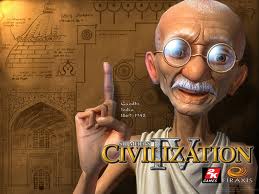Life outside of Earth...
-

Stephani Silva - Posts: 3372
- Joined: Wed Jan 17, 2007 10:11 pm
You're thinking too inside-the-box. There no reason to necessarily assume that we have to work within the boundaries of space and time as we know it. Even if we ever did figure out a way to travel at C (or faster), a current mathematical impossibility, it would still be a horrible way to travel. Even at the speed of light, you would basically say goodbye to everything you know for a trip to the closest star. At exactly the speed of light, you would notice no passage of time, but when you made the round trip to there and back to earth, nine years would have passed. Now imagine going to some of the more interesting places -- some hundreds, or thousands, of light-years away. By the time you GET there, nothing on Earth would be the same. And it would take as long to communicate back as it did to travel. Just thinking about those practical limitations makes traveling at the speed of light unappealing for stellar distances. Going to, say, Saturn, would be one thing. But all the way out to another system? Nah.
You need to forget what you think you know about classical mechanics for a little while, and start pondering the possibilities of theoretical physics. For example, there's a notion in quantum mechanics that states that one particle can exist in two places at once. That is, that particle exists in spacetime just like you and I, but it only shares the time portion, not the space. So when a force acts on that particle at one location in space, the very same particle, perhaps on the other side of the universe, would react the same way. There's your form of instant communication.
Physics is getting closer to the understanding that the universe, matter, space, and time are all illusions built up upon each other. There's so much we don't know that to limit ourselves to what we do know seems short-sighted. Of course, we don't know what we don't know, but we won't know it until we start looking.
You need to forget what you think you know about classical mechanics for a little while, and start pondering the possibilities of theoretical physics. For example, there's a notion in quantum mechanics that states that one particle can exist in two places at once. That is, that particle exists in spacetime just like you and I, but it only shares the time portion, not the space. So when a force acts on that particle at one location in space, the very same particle, perhaps on the other side of the universe, would react the same way. There's your form of instant communication.
Physics is getting closer to the understanding that the universe, matter, space, and time are all illusions built up upon each other. There's so much we don't know that to limit ourselves to what we do know seems short-sighted. Of course, we don't know what we don't know, but we won't know it until we start looking.
Why would nine years pass? If you are going faster than a normal shuttle, a round trip there and back would take less time.
-

Lisha Boo - Posts: 3378
- Joined: Fri Aug 18, 2006 2:56 pm
Why would nine years pass? If you are going faster than a normal shuttle, a round trip there and back would take less time.
My thoughts. Normal time is still passing regardless of how fast you are going. Light speed is how fast you are going, it doesent make time go by faster. My only concern is how would a human survive light speed without g-force ripping them to shreds.
-

Lily Something - Posts: 3327
- Joined: Thu Jun 15, 2006 12:21 pm
Physics is getting closer to the understanding that the universe, matter, space, and time are all illusions built up upon each other. There's so much we don't know that to limit ourselves to what we do know seems short-sighted. Of course, we don't know what we don't know, but we won't know it until we start looking. 
Wesley Crusher: Is Mr. Kosinski like he sounds? A joke?
The Traveler: No, that's too cruel. He has sensed some small part of this.
Wesley Crusher: That space and time and thought... aren't the separate things they appear to be? I just thought the formula you were using said something like that...
The Traveler: Boy, don't ever say that again, especially not at your age in a world that's not ready for such... such dangerous nonsense.
The Traveler: No, that's too cruel. He has sensed some small part of this.
Wesley Crusher: That space and time and thought... aren't the separate things they appear to be? I just thought the formula you were using said something like that...
The Traveler: Boy, don't ever say that again, especially not at your age in a world that's not ready for such... such dangerous nonsense.
ninja-ed by startrek.. where would we be without you Gene?
-

Captian Caveman - Posts: 3410
- Joined: Thu Sep 20, 2007 5:36 am
I think there is life on other planets out there. But I really doubt we'll ever find out. Which is sad, but in our lifetime, hell no. Maybe in a few thousand years, if our planet survives that long.
-

Eileen Collinson - Posts: 3208
- Joined: Thu Dec 28, 2006 2:42 am
My thoughts. Normal time is still passing regardless of how fast you are going. Light speed is how fast you are going, it doesent make time go by faster. My only concern is how would a human survive light speed without g-force ripping them to shreds.
Actually, your speed does affect time. This is something Einstein came up with called 'time dilation'. A person moving more rapidly is going to experience time slower than a person who is moving slowly.
A good example is to take two clocks. Put one clock in a train going at light speed and the other clock in a train going normal speed. Now, assume that at the start of this experiment, the two clocks are perfectly synchronized. By the time the experiment is complete, the fast moving clock will show that much less time has passed than the the slow moving clock shows, despite the fact that they both traveled the same distance in the same amount of time.
-

Danii Brown - Posts: 3337
- Joined: Tue Aug 22, 2006 7:13 am
Why would nine years pass? If you are going faster than a normal shuttle, a round trip there and back would take less time.
My thoughts. Normal time is still passing regardless of how fast you are going. Light speed is how fast you are going, it doesent make time go by faster. My only concern is how would a human survive light speed without g-force ripping them to shreds.
If you're going the speed of light, it would take 4.5 years to get to the nearest star system outside our own -- the Alpha Centauri / Cygna system. Assuming you just turn around when you get there, it's another 4.5 years back. There's your nine years. That's nine years passing for your family on Earth. If you were actually traveling the speed of light, time would not move at all for you, so the only relative time passing for you would be what it took to turn around.
There is no such thing as "normal time." Time is completely relative, and is affected by velocity, gravity, even simple location. No two observers see time passing exactly the same way. For example, our "present" time on earth may be 250 million years in the future for a galaxy on the other side of the universe simply because of how fast it's traveling, where it's going, and where it's been. It has nothing to do with the speed of light in that case -- just part of the nature of spacetime itself.
EDIT: Yes, to Jack's post. http://www.youtube.com/watch?v=p80IhaBz51M&feature=related
-

Jennifer May - Posts: 3376
- Joined: Thu Aug 16, 2007 3:51 pm
Actually, your speed does affect time. This is something Einstein came up with called 'time dilation'. A person moving more rapidly is going to experience time slower than a person who is moving slowly.
A good example is to take two clocks. Put one clock in a train going at light speed and the other clock in a train going normal speed. Now, assume that at the start of this experiment, the two clocks are perfectly synchronized. By the time the experiment is complete, the fast moving clock will show that much less time has passed than the the slow moving clock shows, despite the fact that they both traveled the same distance in the same amount of time.
A good example is to take two clocks. Put one clock in a train going at light speed and the other clock in a train going normal speed. Now, assume that at the start of this experiment, the two clocks are perfectly synchronized. By the time the experiment is complete, the fast moving clock will show that much less time has passed than the the slow moving clock shows, despite the fact that they both traveled the same distance in the same amount of time.
Well since our technology cannot reproduce such an experiment, I'll believe it when I see it. I don't know much about those theories but it doesn't make much sense to me that you would "time travel" just by going faster.
-

clelia vega - Posts: 3433
- Joined: Wed Mar 21, 2007 6:04 pm
If you're going the speed of light, it would take 4.5 years to get to the nearest star system outside our own -- the Alpha Centauri / Cygna system. Assuming you just turn around when you get there, it's another 4.5 years back. There's your nine years. That's nine years passing for your family on Earth. If you were actually traveling the speed of light, time would not move at all for you, so the only relative time passing for you would be what it took to turn around.
There is no such thing as "normal time." Time is completely relative, and is affected by velocity, gravity, even simple location. No two observers see time passing exactly the same way. For example, our "present" time on earth may be 250 million years in the future for a galaxy on the other side of the universe simply because of how fast it's traveling, where it's going, and where it's been. It has nothing to do with the speed of light in that case -- just part of the nature of spacetime itself.
EDIT: Yes, to Jack's post. http://www.youtube.com/watch?v=p80IhaBz51M&feature=related
There is no such thing as "normal time." Time is completely relative, and is affected by velocity, gravity, even simple location. No two observers see time passing exactly the same way. For example, our "present" time on earth may be 250 million years in the future for a galaxy on the other side of the universe simply because of how fast it's traveling, where it's going, and where it's been. It has nothing to do with the speed of light in that case -- just part of the nature of spacetime itself.
EDIT: Yes, to Jack's post. http://www.youtube.com/watch?v=p80IhaBz51M&feature=related
So by going light speed you would age slower? Im referring to time differently than you are. Everything is happening at the same exact moment, despite the speed you are traveling. It doesent make sense that going a faster speed could alter time, because looking at time not so much as a clock or watch, but the point in which everything is happening, everything is happening at the exact same time.
-

Mrs. Patton - Posts: 3418
- Joined: Fri Jan 26, 2007 8:00 am
Well since our technology cannot reproduce such an experiment, I'll believe it when I see it. I don't know much about those theories but it doesn't make much sense to me that you would "time travel" just by going faster.
Comike's video offers a better example than the one I posted.
EDIT: Yes, to Jack's post. http://www.youtube.com/watch?v=p80IhaBz51M&feature=related
---
So by going light speed you would age slower? Im referring to time differently than you are. Everything is happening at the same exact moment, despite the speed you are traveling.
Yes! You would, in fact, age slower if you traveled at the speed of light.
-

Tamika Jett - Posts: 3301
- Joined: Wed Jun 06, 2007 3:44 am
Yes! You would, in fact, age slower if you traveled at the speed of light.  It's all part of Einstein's Special Theory of Relativity. Like the man in the video stated, the speed of light has to stay constant, and the only way for it to do that is if time changes its speed. Time doesn't need to stay constant.
It's all part of Einstein's Special Theory of Relativity. Like the man in the video stated, the speed of light has to stay constant, and the only way for it to do that is if time changes its speed. Time doesn't need to stay constant.
Yeah but time is just a number that we use to refer to the rotation of the Earth. Your physical age doesn't really have anything to do with time.
-

renee Duhamel - Posts: 3371
- Joined: Thu Dec 14, 2006 9:12 am
What are the chances of there being a habitable planet like earth? Very slim.
Not that slim, when you consider the size of the universe. Even if only one in every one billion planets was habitable buy a lifeform similar to ours, there are still millions upon millions of potential habitable planets in the observable universe.
-

Sandeep Khatkar - Posts: 3364
- Joined: Wed Jul 18, 2007 11:02 am
Well since our technology cannot reproduce such an experiment, I'll believe it when I see it. I don't know much about those theories but it doesn't make much sense to me that you would "time travel" just by going faster.
It can reproduce that experiment, actually. Atomic clocks have been synchronized together on earth, and one remains on earth while the other travels aboard a space shuttle orbiting the earth at thousands of miles per hour. The time dilation effect is not very noticeable by our standards, but there is quite a scientifically measurable effect on the radioactive decay of the clock. It's also pretty much proven mathematically.
So by going light speed you would age slower? Im referring to time differently than you are. Everything is happening at the same exact moment, despite the speed you are traveling. It doesent make sense that going a faster speed could alter time, because looking at time not so much as a clock or watch, but the point in which everything is happening, everything is happening at the exact same time.
Yep, you'd physically age slower. Actually, at the full speed of light -- 186,000 miles per second -- you wouldn't age at all. A photon is literally and truly a "timeless" particle because of it's velocity. It's also called the "God particle" for that reason. If you were able to shrink down enough to take a ride on a photon, you'd never experience the passage of time. Essentially, you would be everywhere in the universe at once because there would be no time to separate your experience from one place to the next.
It'd doesn't make logical sense, no, but that's just how the universe works. The faster you go, the slower time passes. Again, no two points in the entire universe experience time [i]the exact same way[i] simply because everything is moving at different speeds, is in different locations, and is affected differently by gravity -- all variables in time experience. And you only alter time for yourself when you speed up -- not any elses' perception of it. So that 9 year round trip -- you'd come back the exact same age -- no different than when you left -- while your twin physically 9 years older.
Yeah but time is just a number that we use to refer to the rotation of the Earth. Your physical age doesn't really have anything to do with time.
No, time, at the core, is simply a passage of a sequence of events. We tend to see time as linear and discrete because that's our experience. The sequence of events we use are the ticks of a clock, or the rising and setting of the sun. If you're moving at the speed of light, there ARE no sequence of events. There is only a single event -- the event of existence. At the speed of light, all things happen simultaneously. Again, that relative to your observation.
-

jenny goodwin - Posts: 3461
- Joined: Wed Sep 13, 2006 4:57 am
Yeah but time is just a number that we use to refer to the rotation of the Earth. Your physical age doesn't really have anything to do with time.
If you had two identical clocks synchronised, leave one on Earth and put the other in a space ship going around the Earth, for example, really fast, later the one that was on the space ship would be late a bit compared to the one that was stationary relative to Earth. Similar experiments have already been done, btw. If something has been proven to be true you can't just disbelieve it on the grounds of "it doesn't make sense to me". http://en.wikipedia.org/wiki/Time_dilation#Experimental_confirmation
-

Silvia Gil - Posts: 3433
- Joined: Mon Nov 20, 2006 9:31 pm
If you had two identical clocks synchronised, leave one on Earth and put the other in a space ship going around the Earth, for example, really fast, later the one that was on the space ship would be late a bit compared to the one that was stationary relative to Earth. Similar experiments have already been done, btw. If something has been proven to be true you can't just disbelieve it on the grounds of "it doesn't make sense to me". http://en.wikipedia.org/wiki/Time_dilation#Experimental_confirmation
I'm not trying to disprove it, I am trying to understand it. <_<
-

Chris Cross Cabaret Man - Posts: 3301
- Joined: Tue Jun 19, 2007 11:33 pm
I'm not trying to disprove it, I am trying to understand it. <_<
That wasn't what I concluded from the things you said, I'm sorry. :shrug:
Anyway, if you want to understand it, read that wiki article.
-

Catharine Krupinski - Posts: 3377
- Joined: Sun Aug 12, 2007 3:39 pm
That wasn't what I concluded from the things you said, I'm sorry. :shrug:
Sorry. that's how I learn things... by debating and asking questions to find out how and why they are true. :facepalm:
-

SWagg KId - Posts: 3488
- Joined: Sat Nov 17, 2007 8:26 am
The space is a big place. Too big for us to understand. Even with the odds Earth had, I strongly believe there is other life around the universe. It may be in different forms, levels of "civilization" and atoms.
There can be life in many places, even very near our solar system. Just because we can't get beyond moon yet doesn't mean everybody else out there can.
There can be life in many places, even very near our solar system. Just because we can't get beyond moon yet doesn't mean everybody else out there can.
-

Gwen - Posts: 3367
- Joined: Sun Apr 01, 2007 3:34 am
mathwise, there has to be life out there....somewhere. one thing i wonder is whether there are naturally made elments out there we simply dont know of, there is so much we dont know...
-

benjamin corsini - Posts: 3411
- Joined: Tue Jul 31, 2007 11:32 pm
I'm not trying to disprove it, I am trying to understand it. <_<
You need to kinda toss out what you know about time to understand it. Well, the basic concepts of it, anyway. Even Einstein didn't fully understand -- just worked out the math and said, "Well, that's weird..."
We tend to see time as constant. Something that cannot be altered or changed. We see the sun and moon rise and set -- we see the seasons come and go. We even watch the stars and planets wheel around the sky. All those primitive forms of keeping time indicate, and logically so, that time is an "arrow." Always moving forward, in the same direction, at the same speed. And for everyday applications, that's a perfectly sound assumption.
The problem is that, just based on our tiny slice of universal observation, we don't have all the points of reference to know that time is always an arrow. Classical Newtonian physics works great for a falling apple, or the motion of a car. But when you start getting to something like the speed of light, or sizes that are sub-atomic, the laws of classical physics start turning into mashed potatoes.
For the sake of this particular post, I'll stick with velocity and how it relates to time. Basically, time is very malleable. This fluid nature of time isn't very apparent at relative speeds we experience day-to-day. If you are in a car, time is different for you than if you're walking. Though the difference is SO minute you'd never be able to measure it. Even flying in a 747, which goes, what, somewhere around 800 MPH? You can't tell the difference.
Even a space shuttle traveling at escape velocity, which is about 12 miles per second, doesn't make the difference very apparent. But over a relatively short period of time, that difference can be measured with instrumentation. And the faster you go, the more noticable it is -- approaching the speed of light. It's shaped like an exponential curve, where the X-axis is your speed, and the Y-axis is time dilation. At the speed of light -- C -- there is an asymptote. That, mathematically speaking, means that the speed of light is NOT attainable -- not by anything with any mass anyway. There's a mathematical formula, called the http://en.wikipedia.org/wiki/Lorentz_transformation which allows us to calculate the relative passage of time for someone traveling at high speeds compared to a "stationary" person (though in the universe, nothing is stationary).
The way it works is that all space and time are interrelated and connected in such a way that any change or impact made to one affects everything. In a specific sense, the faster you go, the more massive you become. Literally, the more physical mass you take on, which means more energy is needed to increase your speed another step. In that graph, the speed of light isn't attainable NOT because it's just too fast -- it's because something with mass traveling the speed of light would have an infinite amount of mass, and require an infinite amount of energy to reach that velocity. That's why only photons (or wave-particle energy) move at that speed.
So the faster you go, the heavier you get. The heavier you get, the more energy it takes to move you. Also, the heavier you get, the more spacetime itself warps around you (which is exactly what gravity is -- the more massive something is, the more "warping" of spacetime it does, which is, basically, what gravity is). The more spacetime warps, the more -- well -- spacetime warps. You can't technically separate the two because, as I said, all space and time is interconnected. Essentially, the faster you move, the greater the spacetime warping you have (or rather, the more powerful gravity well is created around you) because of the accrued mass.
That's how it works. Why it works is just a mystery of the universe. I guess it's just a law of nature. It's like asking why the universe is here. There is no "why," it just "is."
-

Lindsay Dunn - Posts: 3247
- Joined: Sun Sep 10, 2006 9:34 am
As life components (complexe molecules) seems to naturally emerge in some conditions, I think we can safely assume that we're probably not alone in the Universe. 
-

Paula Ramos - Posts: 3384
- Joined: Sun Jul 16, 2006 5:43 am
Ok, for the time thing, I just thought of an anology. Those two clocks that are synched up in the beginning count time EXACTLY the same to begin with. Then you start one in motion, and slowly the counts come apart. Technically, that experiment measured time by radioactive decay -- a very accurate measure of time. The scientists conducting the experiment literally counted how many particles decayed from the stationary clock, and how many decayed from the clock in motion. After, for example, five days on earth time, they brought the two clocks back together at a stationary point, and discovered that the clock in motion had released far fewer particles, which means that time acted upon that clock differently.
But my anology is like this. It's like driving down the road, and coming to a red light before making a turn. You pull up to the car in front of you and notice that, Holy Crap! Your turn signal and his turn signal are in perfect synchronization! It's never happened before, and you're like, completely amazed. But then you notice a slight delay -- an offbeat that's maybe a blink of an eye long, that slowly ebbs into the "perfect synchronization" of the signals. Until, alas, you're in a completely opposite rhythm.
Personally, I have never found another turn signal that matches my own. I've come close. But it always happens like above. But anyway, the difference of time in those two clocks worked out the same way. They were in perfect order until one started in motion. Then they slowly, but surely, feel away from that order.
But my anology is like this. It's like driving down the road, and coming to a red light before making a turn. You pull up to the car in front of you and notice that, Holy Crap! Your turn signal and his turn signal are in perfect synchronization! It's never happened before, and you're like, completely amazed. But then you notice a slight delay -- an offbeat that's maybe a blink of an eye long, that slowly ebbs into the "perfect synchronization" of the signals. Until, alas, you're in a completely opposite rhythm.
Personally, I have never found another turn signal that matches my own. I've come close. But it always happens like above. But anyway, the difference of time in those two clocks worked out the same way. They were in perfect order until one started in motion. Then they slowly, but surely, feel away from that order.
-

YO MAma - Posts: 3321
- Joined: Thu Dec 21, 2006 8:24 am
A lot of people believe that potential aliens would likely be hostile because they would want our planet. What I have to ask is, why? This place is overpopulated, polluted, and overall, just a junkyard. If they had the technology to not only find us, but to actually make it all the way to our planet, SURELY they could find another habitable planet that has nothing protecting it from newcomers, and less pollution. Maybe a planet that has some animal life, but not yet any highly intelligent life.
Honestly, fighting to be able to inhabit earth would be like fighting someone for a few scraps of food in a trash can when there's a free thanksgiving feast sitting untouched.
Honestly, fighting to be able to inhabit earth would be like fighting someone for a few scraps of food in a trash can when there's a free thanksgiving feast sitting untouched.
-

Sarah Knight - Posts: 3416
- Joined: Mon Jun 19, 2006 5:02 am
That'd be great if aliens existed. I'm somewhere in the middle, where I'm not sure. Realistically, if I had a chance to go in space, I probably wouldn't because of bone decay and dementia.
-

Ashley Hill - Posts: 3516
- Joined: Tue Jul 04, 2006 5:27 am
snip
Hate to break up this little back and forth, but have they (physicists) figured out why such things as light act as both particles and waves at certain times?
-

Izzy Coleman - Posts: 3336
- Joined: Tue Jun 20, 2006 3:34 am
